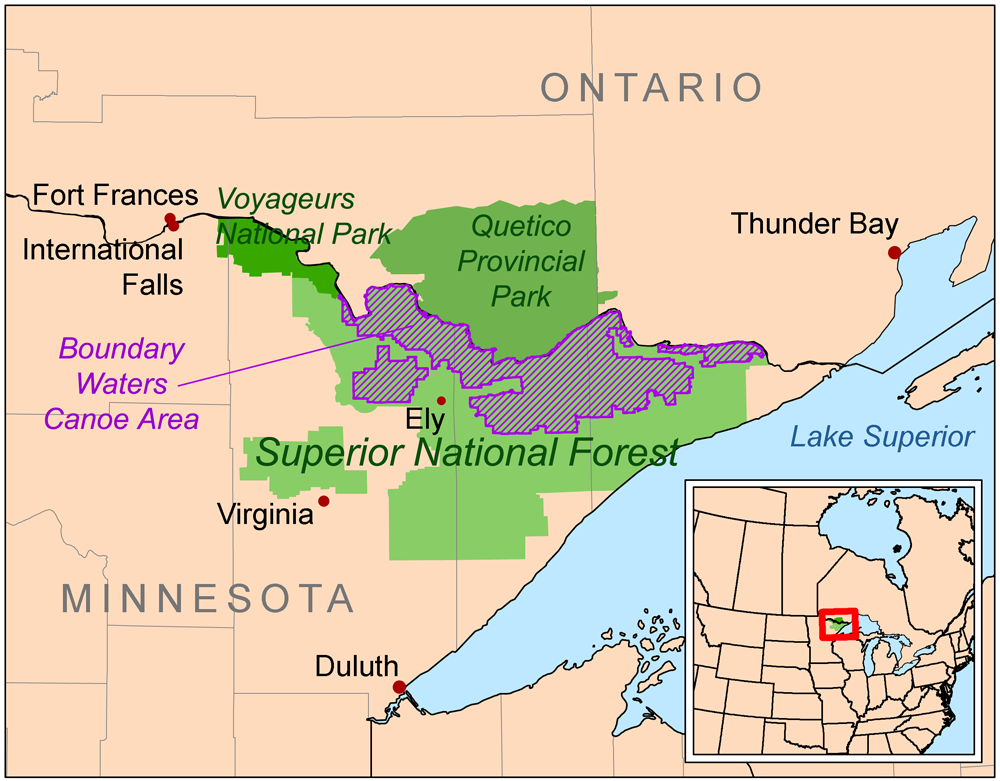If tourism is an alternative source of prosperity for northern Minnesota, why isn’t it already?
When you make the argument for mining in Minnesota, a common response is that it would threaten the region’s booming tourism industry. Mining jobs aren’t needed, so the argument goes, because there are jobs in tourism instead. The trouble is that when you look at the data, you struggle to see this ‘boom’. You are left wondering how opponents of mining can pin their hopes for northern Minnesota’s economic future on such a misconception.
The data on leisure and hospitality in the BWCA
The Boundary Waters Canoe Area spreads across northern St Louis, Lake, and Cook counties.

Data from the Bureau of Economic Analysis shows that between 2000 and 2016, Personal Income grew in real terms by 17% in St Louis and Lake Counties and 25% in Cook County. To put this in context, Minnesota generally saw growth of 30%.
Looking at data from the Bureau of Labor Statistics, we see that between 2001 and 2017, total private employment rose by 9% in Cook and St Louis Counties and 1% in Lake County. Over the same period, for Minnesota as a whole the figure was 10%.
But even these increases in employment in the BWCA counties weren’t driven by jobs in leisure and hospitality. BLS data show that between 2001 and 2017, as a share of total employment, leisure and hospitality employment rose by just one percentage point in St Louis County (13% to 14%), stayed unchanged in Lake County (25%), and actually fell by nine percentage points in Cook County (60% to 51%). For Minnesota as a whole, leisure and hospitality employment increased by one percentage point over this period (10% to 11%). In other words, the best performing BWCA county only matched the state average for increased employment in leisure and hospitality.
Data on wages is patchier. But, for St Louis County, the BLS data show that Average Annual Pay in ‘Mining, except oil and gas’ was $88,826 in 2017, compared to $16,542 for ‘Leisure and hospitality’. This is a difference of $72,284.
If tourism represents an alternative source of prosperity, why isn’t it bringing it already?
These counties need stronger economies. According to Census Bureau data, all three have poverty rates above that of Minnesota’s rate of 10.8% – 11.9% for Cook County, 12.0% for Lake County, and 15.5% for St. Louis County. There is, at present, little scope for the inhabitants of northern Minnesota to enjoy the leisure facilities on their doorstep, facilities that better off Minnesotans from elsewhere in the state take for granted.
No doubt tourism is an important part of the region’s economy. But even with mining, it can continue to be so. The point is that it cannot be the only economic game in town. Low paid, seasonal employment such as this has not and in all likelihood will not provide the prosperity that our fellow Minnesotans in the north of the state both need and deserve.
John Phelan is an economist at the Center of the American Experiment.